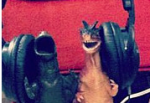Community Embraces New Word Game at Mid-Year Play Day This past Sunday, families at Takoma Park’s Seventh Annual Mid-Year Play Day had the opportunity to experience OtherWordly for the first time. Our educational language game drew curious children and parents to our table throughout the afternoon. Words in Space Several children gathered around our iPads […]
Read moreAuthor: IDEA
Community Embraces New Word Game at Mid-Year Play Day This past Sunday, families at Takoma Park’s Seventh Annual Mid-Year Play Day had the opportunity to experience OtherWordly for the first time. Our educational language game drew curious children and parents to our table throughout the afternoon. Words in Space Several children gathered around our iPads
Play with the meanings of words, in space! Come by 7500 Maple Ave on Sunday afternoon, at the Takoma Park Community Center (next to the library) for the Seventh Annual Mid-Year Play Day. We’re excited to introduce OtherWordly to our local community! What to Expect As part of IDEA’s commitment to childhood literacy, OtherWordly helps
 Crowdsourcing can build virtual community, engage the public, and build large knowledge databases about science and culture. But what does it take, and how fast can you grow?
Crowdsourcing can build virtual community, engage the public, and build large knowledge databases about science and culture. But what does it take, and how fast can you grow?
 For some insight, we look at a crowdsourced history site: Historypin is an appealing database of historical photos, with dates, locations, captions, and other metadata. It’s called History “pin” because the photos are pinned on a map. (See recent article about Changes over time, in photos and maps.) Some locations have photos from multiple dates, showing how a place has changed over time, or cross-referenced with Google Maps StreetView. Currently, Historypin has 308k items, from 51k users, and 1.4k institutions. This is a graph of pins over the last three years: (more…)
For some insight, we look at a crowdsourced history site: Historypin is an appealing database of historical photos, with dates, locations, captions, and other metadata. It’s called History “pin” because the photos are pinned on a map. (See recent article about Changes over time, in photos and maps.) Some locations have photos from multiple dates, showing how a place has changed over time, or cross-referenced with Google Maps StreetView. Currently, Historypin has 308k items, from 51k users, and 1.4k institutions. This is a graph of pins over the last three years: (more…)
 “Uh-oh,” Refe Tuma heard his girls whisper. “Mom and Dad are not going to like this.”
“Uh-oh,” Refe Tuma heard his girls whisper. “Mom and Dad are not going to like this.”
It’s Dinovember, and his family’s plastic dinosaurs have been getting into mischief all month. Every year, Tuma and his wife devote the month of November to “convincing our children that, while they sleep, their plastic dinosaur figures come to life. (more…)
A new generation of small video cameras and consumer robotic helicopters make amazing video shots possible. Stick your phone on a drone for enchanting views of the natural world, architecture, museums, and more. Here’s a cool new video flying a drone around the NY public library:
 Wikipedia has 4,362,397 articles in English. But how many of those are seriously encyclopedic, and what are the most important articles?
Wikipedia has 4,362,397 articles in English. But how many of those are seriously encyclopedic, and what are the most important articles?
We’ve been looking closely at Wikipedia for an upcoming app. We wanted to know the most important articles. We calculated an importance score for every article, based on how richly linked a Wikipedia article is within Wikipedia (the number and quality of links to a page), how many languages an article has been translated into, the brevity of the title, how popular an articles is (web hits), and the number of citations/references of an article (scholarliness).
The following are our results. This is an arbitrary, but interesting ranking, so we wanted to share it: (more…)
 Images gain new meaning when given the context of location or change. Two sites, from NASA and HistoryPin do this to good effect — such as showing the the dramatic melting of the Muir glacier in Alaska, or how a city evolves.
Images gain new meaning when given the context of location or change. Two sites, from NASA and HistoryPin do this to good effect — such as showing the the dramatic melting of the Muir glacier in Alaska, or how a city evolves.
Launched in autumn 2011 by a British nonprofit, HistoryPin pins historical items on a map. Their service demonstrates the potential for a global, crowdsourced database of historical media. (more…)
 Online education can have a real impact in the developing world. Last week, we needed to hire a programmer for a small freelance job. To my surprise, several candidates advertised they had completed programming MOOCs. These were young programmers in their 20’s, in countries like Pakistan and Thailand, who lacked college-level coursework, but are trying to launch freelancing careers based on online courses.
Online education can have a real impact in the developing world. Last week, we needed to hire a programmer for a small freelance job. To my surprise, several candidates advertised they had completed programming MOOCs. These were young programmers in their 20’s, in countries like Pakistan and Thailand, who lacked college-level coursework, but are trying to launch freelancing careers based on online courses.
Online courses and MOOCs may be a poor substitute for in-person learning with a charismatic teacher, but they are light-years better than nothing, and are particularly relevant for higher education and specific skills, when students are self-motivated. (more…)



 Words matter. And so does presentation. Fifty years ago, this week, the Rev. Martin Luther King Jr. delivered his famous “I have a dream” speech. But what if King eschewed wordiness, and instead delivered a slideshow? What could it look like?
Words matter. And so does presentation. Fifty years ago, this week, the Rev. Martin Luther King Jr. delivered his famous “I have a dream” speech. But what if King eschewed wordiness, and instead delivered a slideshow? What could it look like?